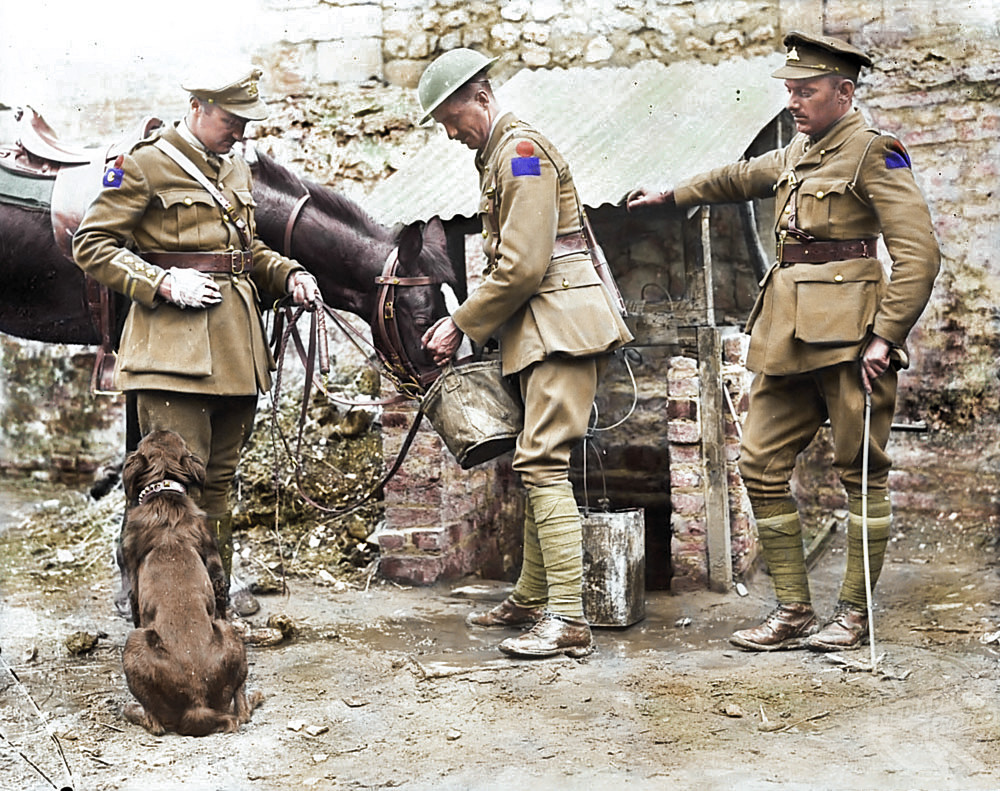
By Ben Wheeler
FASCINATING images from the First World War, showing the important role played by man’s four legged friends during the conflict, have been brought into the twenty-first century after being re-imagined in spectacular colour.
The incredible photographs show not only how animals assisted with heavy-duty work but also provide light relief to the troops.
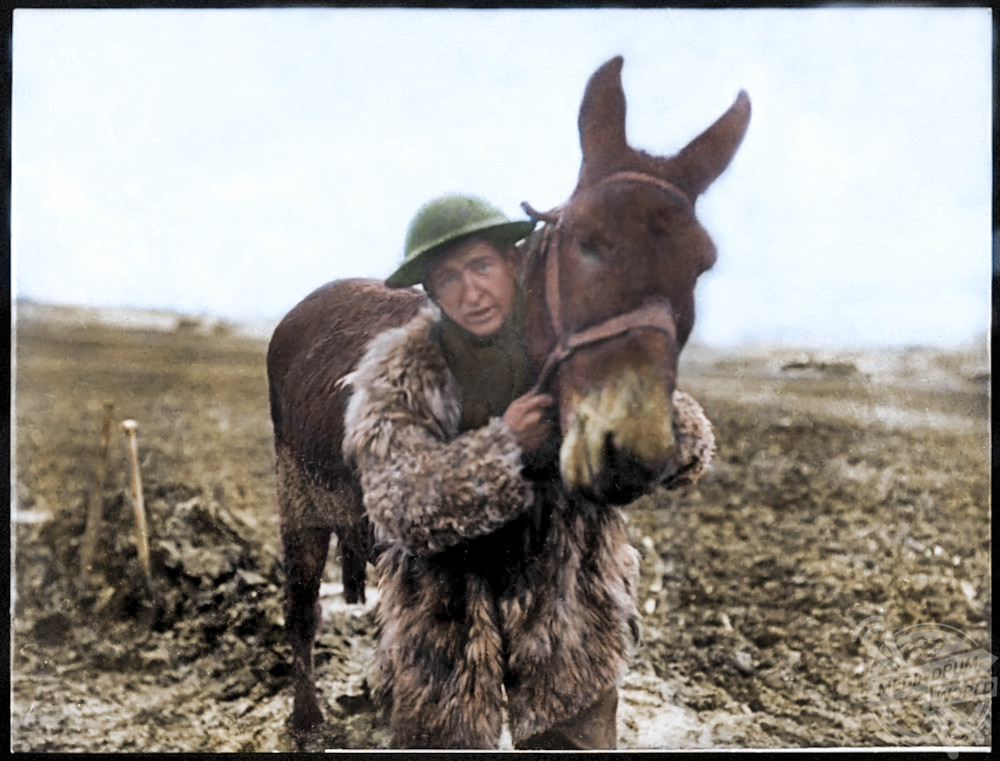
For example, one officer of the 444 Siege Battery is seen smoking a pipe whilst stroking a tiny kitten who is perched on a 12-inch shell that dwarfs the feline in size.
On the other hand, a team of horses can be seen dragging a heavy field gun through muddy terrain on the way to the Somme.
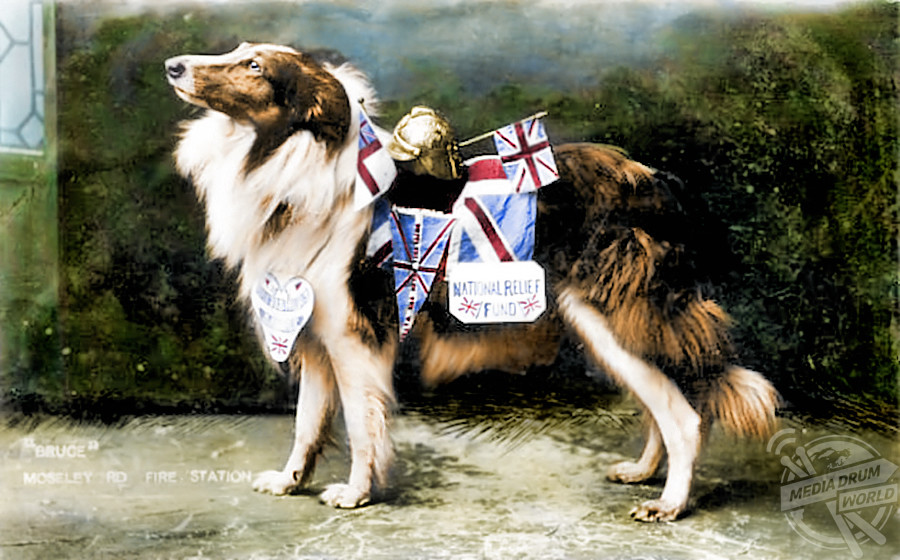
The snaps are the work of Cardiff-based Electrician, Royston Leonard, 55, who has painstakingly brought the images to life through colourisation.
“The idea was to show the use of animals in a war they did not start but were drawn in to by humans,” he said.
“They have been used by man in a lot of wars only to be left behind, if not killed when no longer needed.
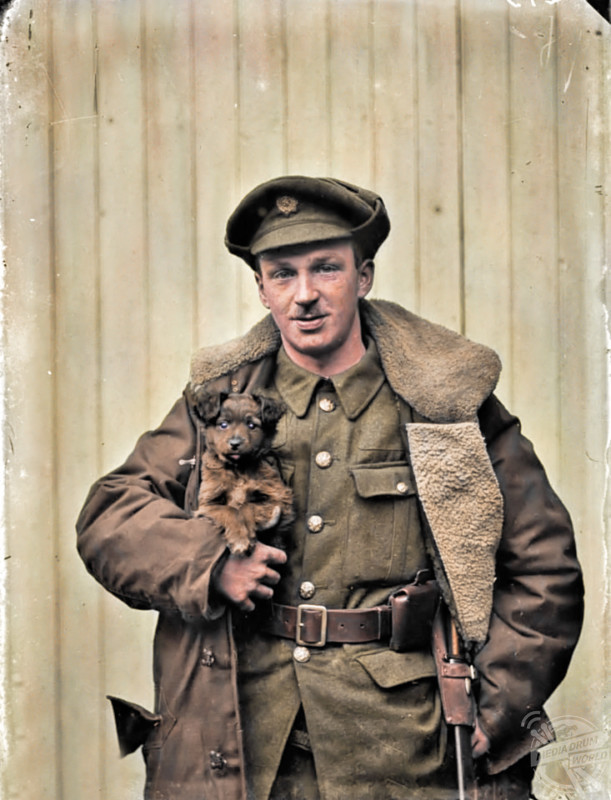
“From moving equipment, to running message, to finding bombs and saving lives on the battlefield to just being there giving friendship and company to the servicemen.
“I use a program called Paint Shop Pro and a standard PC to colourise the images, when doing this I always remember the photographers who went in to battle to get these shots.”
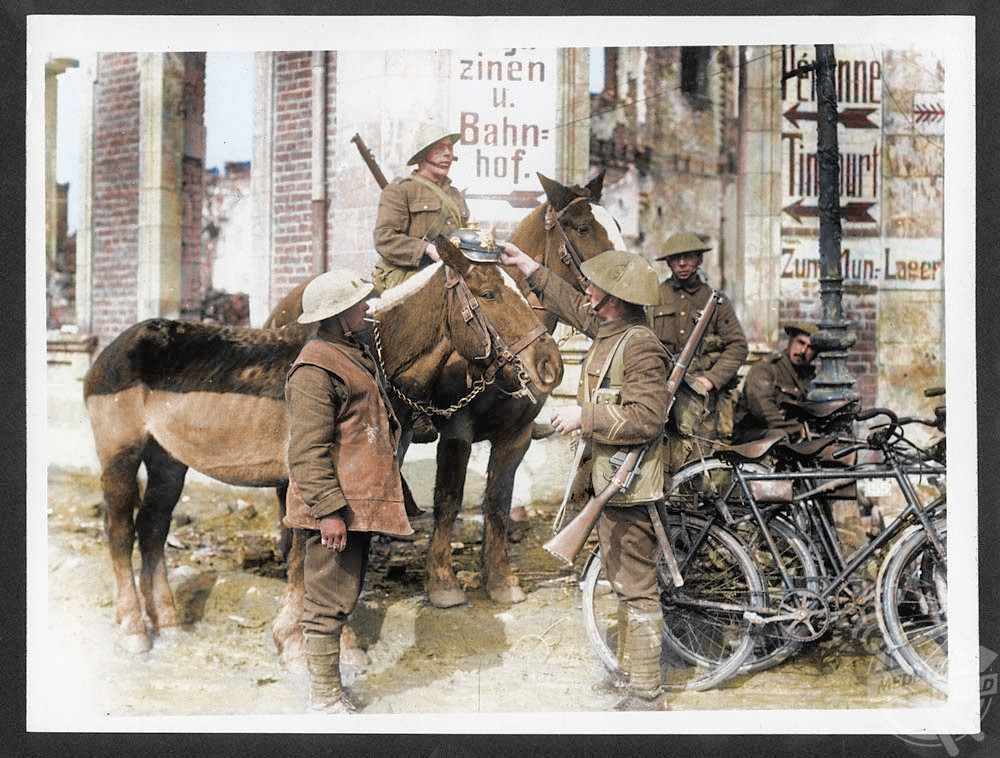
It is believed that over 16 million animals served in the First World War, being used for transport, communication and companionship.
Both sides possessed extensive cavalry forces with horses and camels being deployed in desert campaigns throughout the war. However, cavalry charges became increasingly difficult on the Western Front with new weapons such as the machine gun becoming increasingly common.
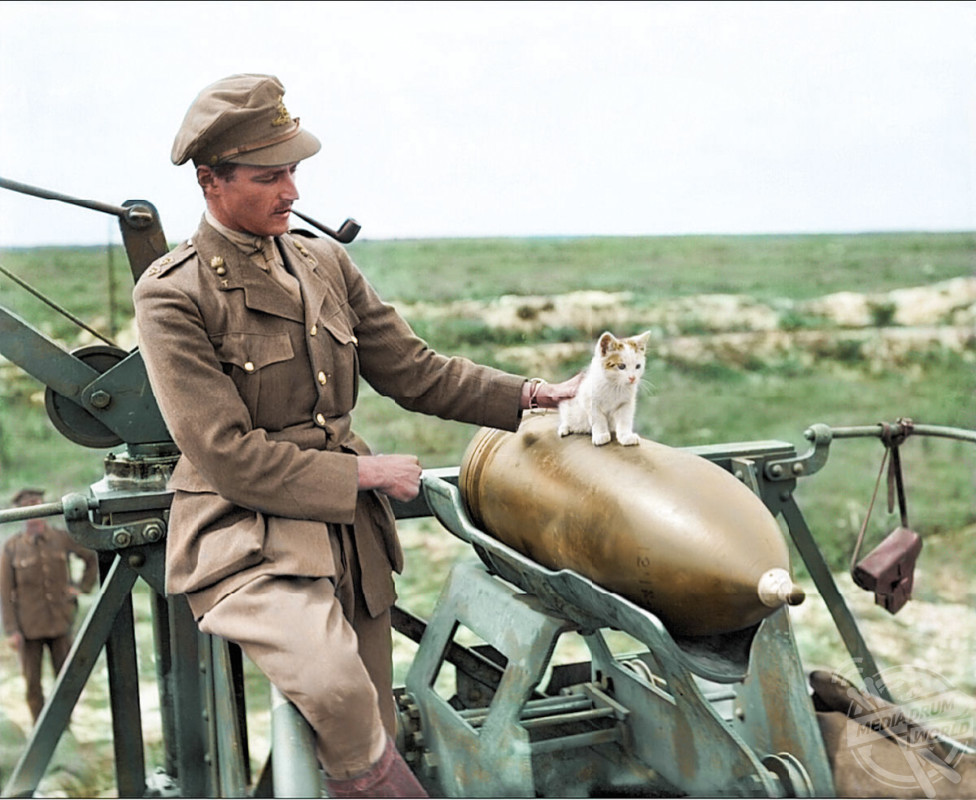
In spite of this, animals remained a crucial part of the war effort. Horses, donkeys, mules and camels carried food, water, ammunition and medical supplies to men on the front lines, whilst dogs and pigeons regularly ferried messages. Canaries were used to detect poisonous gas and cats and dogs were even trained to rid the trenches of rodents.
It wasn’t only work that animals were used for. Dogs, cats and more unusual animals including monkeys, bears and lions were kept as pets to raise morale and provide comfort amidst the hardships of war.






